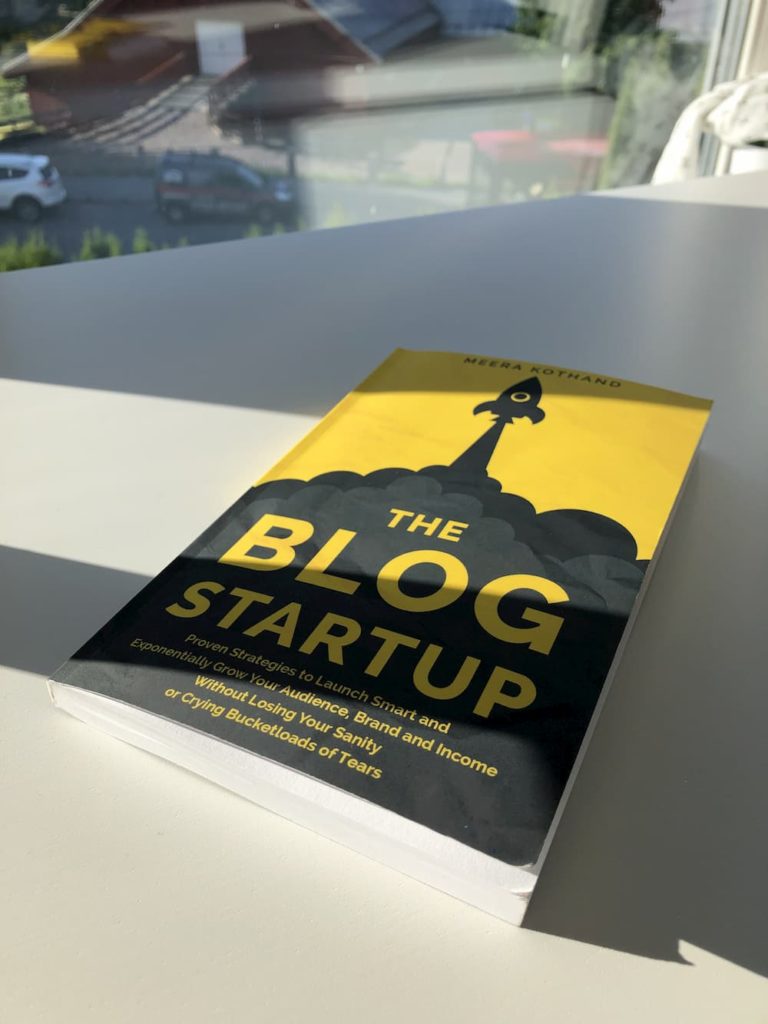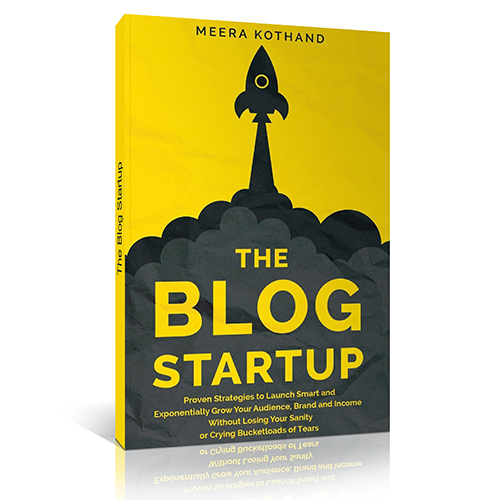TLDR: Main takeaways
- To make money from your blog, you need to sell products or services. Ads is not enough
- Build your email list
- Define your niche/theme
- Define your ideal reader
- Mine forums, Facebook Groups, Amazon etc for content ideas
- Map out your readers journey
- Give every post an objective and map it to the readers journey
- Be creative with opt-in incentives
Notes on The Blog Startup
In march 2019, over 4.4 million blog posts were published every day. Each minute, 380 websites are created. Why would someone read your blog when there are millions out there? Why should they buy from you instead of someone else?
Blogs don’t make money
Many of us want to get started with internet marketing because we’re fascinated with all the golden promises we’ve heard, intrigued by those income reports we’ve read, and want to scratch that itch of “Can I really make money online?”
But unless you use ads as a monetization strategy, blogs don’t make money. Businesses do. Your blog is not a business. It would be really difficult and you would need a huge amount of traffic to be able to make money from the ads alone on your blog. So when people say, “My blog makes 10k a month,” they have a solid business in the background working for them. They have a business model. They have their core or brand that is responsible for attracting people to them.
There are two ways to approach blogging when you’re starting out.
In method 1, you start with no product or service and create content to attract, grow, and nurture your audience. Your blog serves as a content hub to get people in the door.
In method 2, you have existing products and services and your blog serve to support your business.
Nail your lucrative niche
Niche is probably the most loathed word in your vocabulary right now. You’ve probably seen interconnected circles, taken quastionnaires about your passion and interests, and still circled back to where you started – with nothing to show for it.
The real reason you’re not able to pick a niche is that you’re afraid to commit. You’re afraid that you’ll go down the wrong path and waste all this time (and maybe even money) starting something that you realize later is not working. Nailing down your niche can seem like this immensely critical decision that can make or brake your site.
Here are some myths you may have heard about niches:
- If there are big, established blogs in a niche, stay away from it
- If you don’t have enough experience and knowledge in the niche, don’t even attempt it
- Your niche has to be original
If there are several blogs in a niche, that niche is crowded. But it also means that there is validation of an existing audience out there for your blog.
Those big blogs may take a chunk of your audience, but not everyone will resonate with the voice and style of the big blogs. That’s the reason several blogs are able to thrive alongside each other. Remember that people are more likely to be influenced by someone they like and can relate to – someone who’s at a level that seems attainable. The pie is big enough for all of us.
Think of your blog in terms of the problem it solves. In its essence, a niche is a solution to a problem. People want to be better versions of themselves.
The missing puzzle pieces that people don’t consider before they pick a niche are:
- Are there others in this niche who are serving a similar audience (big or small) who have the same problem or pain points that you want to help sove
- Effectively monetizing their sites
Who is participating in the conversation in this niche? Make a list of these people. Take note of their biz models: How are they monetizing their blogs? If you see that people are paying to get rid of pain or to gain something, then there’s certainly potential in that niche. You’re looking for signs of money flows in the niche. This could be via digital products, coaching, services, events, or even physical products.
Your niche needs to have recurring income potential. You don’t want to solve a problem that people only seek help for once. You want a niche where people have the opportunity to advance and fulfill their potential at various stages. How can they solve pain points of various intensities as they progress?
What if I can’t see myself talking about a single topic?
There are lots of lifestyle blogs that make good money. But you do need to bring your topics under one overarching theme or topic. What is your main message to your audience? What is the one thing you want them to take away? What message combines your different topics?
Pick a message, keep it at the center, and then work out your value proposition. Keep drilling that in and your audience will understand what you have on offer compared to when you try to explain five other things at the same time.

Your one reader
By defining who exactly your ideal reader is, you’ll be able to:
- Talk to your audience at the right level
- Not waste your effort writing for people who will never enjoy or gel with your content
- Not scratch your head thinking about what content to create because you know exactly what your audience needs
Pshychographics:
- What frustrates them?
- What worries do they have?
- What websites do they visit?
- What blogs do they read?
- What other hobbies or interests do they have?
- What social media channels do they hang out on?
- What mental block do they have to overcome?
- What is preventing your ideal reader from achieving the desired outcome?
Motivation factors:
- What do they desire, want, and aspire to?
- What are their fears, frustrations, and challenges?
- What do they want to achieve in the next three years?
Mine for information
Join Facebook groups where your ideal audience members are likely to hang out. Find out what questions they are asking and what pain points they have. Other places you can mine for information on your ideal reader are Amazon, Udemy, and Product Hunt to name a few.
The more you alienate people, the more you attract your own kind of people too
The reader journey
What keeps my audience stuck in this phase and what do they need from me and my content to move forward? Create different pieces of content to fuel the reader journey.
For instance, let’s take the example of a single mom who wants to start a virtual assistant (VA) business. Here are some topics that I came up with for readers who are at different stages:
- Why a VA business is perfect for moms and why you need to start one today (problem unaware)
- 13 things holding you back from launching your VA business (problem aware)
- Think you have no skills to start a VA business? Think again. Here’s why you may be perfect for the role (solution unaware)
- How this mom makes $10K a month form her VA business (desire)
- The only e-book you need to start your VA business in 10 days flat (action and implementation)
Determine the purpose of the post
Always determine how each piece of content is going to fit into your entire blog and business. Ask yourself what’s the goal of the post. What do you want each post to do? When you write with the end in mind, you know what the post is meant to do based on the tangible and intangible goals you set beforehand.
Tangible goals:
- Drive opt-ins to gauge interest for a product
- Get opt-ins and then lead them down a sequence to a paid product
- Make an affiliate commission
- Pitch a sponsored post
- Educate your reader
Intangible goals:
- Position yourself as an expert or thought leader
- Network with influencers
- Empower your readers
- Entertain with personal stories
Opt-in incentives
The easiest way to grow your email list is to offer an opt-in incentive or lead magnet. Examples:
- Swipe files
- Cheat sheets
- Tool kits
- How-to guides
- Exclusive access to membership/Facebook groups
- Test/Quiz/Assessment
- Webinar
- Bite-sized email series
- Free assessment
- Free consult
- Coupons
- Loyalty program
The thank you page
The thank you page is your opportunity to wow your readers. Here are som elements you could include:
- A picture of you
- Clear instructions on what they should do next
- Your social media links
- A request to share your site or freebie
- Links to your best content
- Testimonials from your readers
- A personality (the most important thing!)
Links to a selection of Meera’s books on Amazon
Personal review
I had hoped it would be a little more advanced with more insights and tips. But hey, I understand that this is meant for people who are just starting out, and from a newcomers perspective I believe it is a okay introduction. It does contain several actionable tips & tricks, and I got inspired on some of the chapters. It is also a very easy read. The book is short and the text is very big, so you’ll be rushing through it in no time. I appreciate books that are just as long as they need to be.
Rating: 5/10

